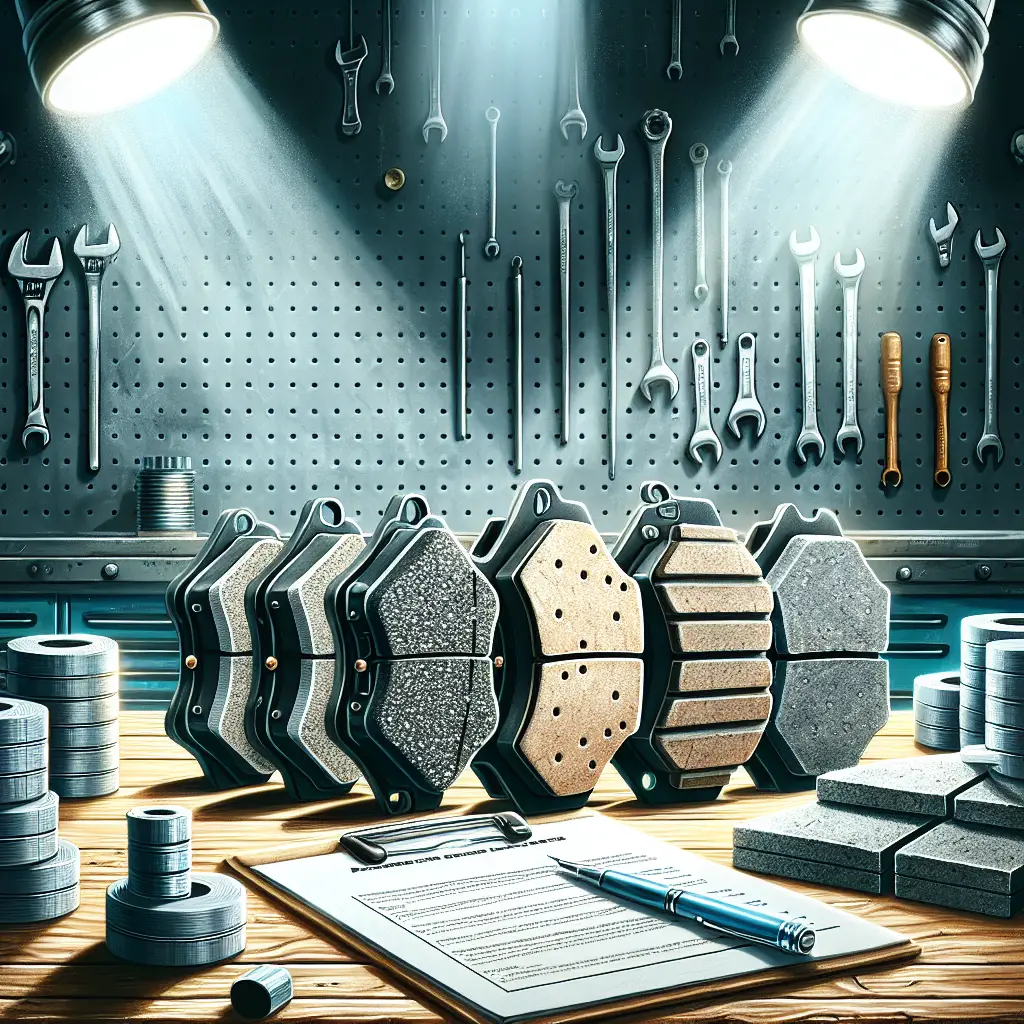Title: What Type of Brake Pad Should I Buy?
Choosing the right brake pads for your vehicle is crucial for ensuring safety, enhancing driving performance, and maintaining the integrity of your braking system. With various types on the market, it can be daunting to decide which brake pad best suits your needs. In this comprehensive guide, we’ll explore the different types of brake pads and help you make an informed decision.
Understanding the Importance of Brake Pads
Before diving into the types of brake pads, it’s essential to understand their role in your vehicle’s safety. Brake pads are a key component in a car’s braking system, as they apply pressure and friction to the brake rotors. This process slows down your car, eventually bringing it to a halt. Over time, wear and tear on brake pads is inevitable, which is why selecting the appropriate type for your driving habits and vehicle type can make a significant difference.
The Four Main Types of Brake Pads
When shopping for brake pads, you’ll encounter four primary materials: semi-metallic, non-asbestos organic (NAO), low-metallic NAO, and ceramic. Each comes with its own set of benefits and caveats.
Semi-Metallic Brake Pads
Semi-metallic brake pads consist of a mix of metal fibers (like steel, iron, or copper) blended with fillers and a binding resin. These pads are known for their durability and excellent heat transfer but can be noisier and more abrasive on rotors than other types.
- Pros: Excellent heat dissipation, long-lasting, good performance in a wide temperature range.
- Cons: May wear down rotors faster, can be noisy, less effective in extremely cold temperatures.
Consumer Reports often highlights the pros and cons of semi-metallic pads in its brake pad buying guides.
Non-Asbestos Organic Brake Pads
Non-asbestos organic pads, also known as NAO, are made from organic fibers like rubber, Kevlar, or glass, mixed with filler materials and bound together with high-temperature resins. These are softer and quieter than semi-metallic pads but tend to wear out faster.
- Pros: Quieter operation, less stress on rotors.
- Cons: Shorter lifespan, poor performance under extreme stress or temperature.
Experts at Car and Driver often talk about the balance between performance and durability when discussing NAO pads.
Low-Metallic NAO Brake Pads
Low-metallic NAO pads are similar to NAO but include a small amount of metal (typically 10-30%) to improve heat transfer and braking performance. They can be slightly noisier than NAO and may produce more brake dust.
- Pros: Better heat dissipation than NAO, improved stopping power.
- Cons: Increased noise and brake dust compared to NAO.
Ceramic Brake Pads
Ceramic brake pads are made of ceramic fibers, nonferrous filler materials, and sometimes small amounts of metal. They create less noise and dust than semi-metallic or low-metallic pads, and don’t wear out the rotors as quickly.
- Pros: Quiet operation, low brake dust, less rotor wear, good performance in a variety of temperatures.
- Cons: Typically the most expensive, not ideal for extreme high-performance driving conditions.
Automotive enthusiasts and professionals on Motor Trend often recommend ceramic pads for daily driving due to their balanced performance traits.
Factors to Consider When Selecting Brake Pads
Now that you’re familiar with the various types, let’s consider some important factors to guide your decision.
Driving Habits
Your driving style has a significant impact on the type of brake pad that’s best for you. For frequent city driving with constant stops, softer brake pads like NAO might be preferable due to their quiet nature. However, for highway driving or towing, semi-metallic pads could offer the durability you need.
Vehicle Type
The make and model of your vehicle can dictate the types of brake pads that are compatible or optimal. Always check your car’s manual or consult with a professional to understand the manufacturer’s recommendations.
Climate and Environment
If you live in an area with extreme weather conditions, your brake pads need to cope with those extremes. For instance, ceramic pads are generally better in a wide range of temperatures compared to other types, making them a good all-rounder for various climates.
Budget Considerations
While it might be tempting to go for the cheapest option, remember that brake pads are integral to your vehicle’s safety. Investing in a higher-quality brake pad could save you money in the long-run by reducing wear on other brake components and ensuring reliable performance.
Installation
Consider whether you’ll be installing the brake pads yourself or hiring a professional. If opting for the latter, remember to account for the labor costs when budgeting.
Your Next Steps
Now that you’re armed with information on the different types of brake pads and the factors influencing your choice, you’re well-equipped to make a purchase decision. Here are your next steps:
- Review Your Driving Habits: Reflect on your typical driving scenarios and conditions.
- Consult Your Vehicle’s Manual: Always cross-reference your vehicle’s recommendations.
- Research Quality Brands: Look for well-reviewed brands that specialize in brake components.
- Get Professional Advice: If in doubt, speak to your mechanic or a brake specialist.
Conclusion
Selecting the right brake pads is a delicate balance between your vehicle’s specifications, typical driving patterns, and personal preferences. Whether you prioritize longevity, noise reduction, or cost-effectiveness, there’s a brake pad out there for you. Take the time to research, and don’t shy away from investing in the safety and performance of your vehicle.
Good luck in finding the perfect match for your car’s braking needs, and remember, regular maintenance is the key to ensuring the longevity and efficiency of your new brake pads.
For further guidance, automotive forums and official car brand websites can be a wealth of information, and don’t forget to keep up to date with the latest articles from trusted sources like insider.com and goodhousekeeping.com.
Happy driving!

